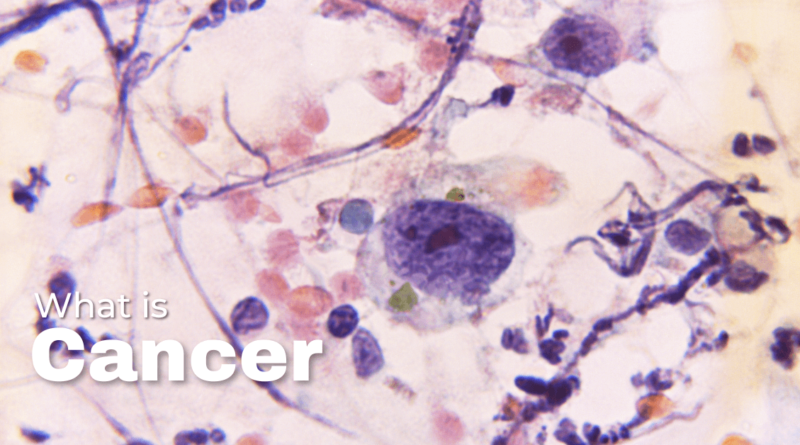What is Cancer?
Cancer is defined as uncontrolled cell differentiation in an abnormal way and destroying healthy normal cells. As the second-leading cause of death around the world, cancer is one of the leading causes of death. In this blog, we will provide you with the basics of cancer and also try to show you how to diagnose cancer.
Cancer is broadly divided into two categories. The first one is named the benign type, in which the cancer cells form a tumour and do not move into surrounding tissues.
The second type is known as the metastasis type in which the cancer cells invade the surrounding tissues.
Factors that cause cancer:
Cancer is caused by genetic disorders or mutations. Proto-oncogenes under normal conditions are responsible for cell division, but when proto-oncogenes become mutated, they are converted into oncogenes and become cancerous. Smoking also adds fuel to the cause of cancer. Smoking contains several carcinogenic compounds that can cause cancer. Most cancers are related to environmental factors, including pollution, and harmful UV rays.
Types of Cancer
Cancer can occur in any part of the body and damage the tissues. Types of cancer include
- Sarcoma – It occurs when malignant tissues arise from connective tissues such as muscles, bone and cartilage.
- Lymphoma – It occurs when the cancer cells originate from nodes or glands of the lymphatic system.
- Leukemia – Leukemia is another name for blood cancer. This type of cancer is also known as cancer of the blood cells. It originates from the bone marrow.
Characteristics of cancer cells
- A cancer cell is irregular in shape with a nucleus that is darker and larger and is characterized by irregular shapes.
- Their growth does not rely on oxygen for support, nor do they communicate with nearby cells. It is not possible for the immune system to detect them.
- Cancer cells are highly inefficient when it comes to utilizing energy.
- The ability of cancer cells to form angiogenesis for their own blood supply is one of their most valuable characteristics.
Here’s how to diagnose cancer
An individual may be diagnosed with cancer by undergoing blood tests like a CBC count and imaging tests such as X-rays (for example, mammography), CT scans, endoscopies, and biopsies.
What’s the treatment
There are many methods of treating cancer, including chemotherapy, radiotherapy, targeted therapy, hormonal therapy, laser therapy, and surgical procedures.
Chemotherapy
To treat cancer, chemotherapy is a treatment that involves providing alkylating agents and antimetabolites as a type of drug to kill or destroy the cancerous cells that are dividing abnormally during treatment.
Radiotherapy
It is a treatment that involves the use of radiation in order to destroy the DNA of the cancerous cells through the use of radiation. Most skin cancers are treated with radiotherapy, and it is one of the most common treatments available.
Laser Therapy
In laser therapy, high-intensity light is used to destroy cancer cells by killing them quickly. When high-intensity light is applied to the affected area it helps in the shrinking of the cancerous cells.
Surgery
If the tumours are large enough, surgery can be performed to remove them. The major disadvantage of this method is that it can only be performed when the cancer is in its early stages, which is one of the major disadvantages of this method.
Despite many of these treatment methods they all have certain disadvantages like multi-drug resistance, destroying the normal cells.
New Advancements
In order to overcome these disadvantages nowadays focus is made on targeted drug delivery. The targeted drug delivery system has many advantages over the conventional method of treatment like high bioavailability, the unidirectional release of drug to the affected area, the drug being given to the targeted area so no normal tissue is destroyed, ease of administration, and no risk of drug resistance.
Currently, researchers are using nanotechnology as a promising tool for cancer detection and treatment.
Nanoparticles are tiny that is 1 to 100nm in diameter and have a larger surface-to-volume area.
One of the essential properties of Nanoparticles is they have shown enhanced cytotoxicity towards cancer cells. They have the potential to kill cancer cells by inducing the oxidative stress of tumour cells.
Metal nanoparticles can be easily synthesized from several plant extracts using their precursor.
So let’s conclude:
Cancer is affecting thousands of people with a higher mortality rate can be cured and the mortality rate can be reduced by early diagnosis, maintaining a healthy lifestyle and proper treatment.
There are a variety of applications involving nanoparticles, particularly in research and therapy of cancer, due to their unique properties. With their selective targeting property and usefulness as a carrier agent, nanoparticles can be good substitutes for traditional cancer therapy.

Pingback: What is Mammography? - Bio Mint